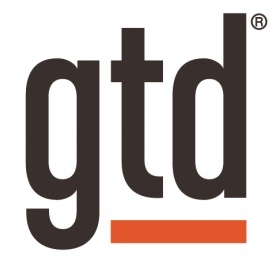David Allen's Blog, page 39
August 30, 2018
20 Things GTD is Not

GTD is not about managing time better
It’s about managing your attention
GTD is not about having better control over the world
It’s about being in control on where you put your focus
GTD is not about setting plans and achieving fixed goals
It’s about having the freedom to explore options
GTD is not about playing safe
It’s about being ready for surprises
GTD is not doing more hard work
It’s about doing the right thing at the right time
GTD is not about being busier
It’s about making trusted choices at any given moment
GTD is not about creating a perfect plan
It’s about having the speed to maneuver to seize opportunities
GTD is not about reaching a perfect state
It’s about giving you maximum flexibility
GTD is not about doing things early
It’s about doing things just in time
GTD is not about changing the world
It’s about how you engage with the world
GTD is not about being more disciplined
It’s about going in the direction to your desired outcomes
GTD is not about always being in your zone
It’s about the speed to get back on when you fall off.
GTD is not about not being messy
It’s about giving you the freedom to make a mess
GTD is not just about Getting Things Done
It’s about being fully present with what you’re doing
GTD is not about being smart all the time
It’s about making smart choices when you’re feeling dumb and lazy
GTD is not about doing everything on your list
It’s about feeling good about the things that you’re not doing
GTD does not feed you solutions to your problems
It puts you in the driver’s seat to find your own solutions
GTD is not about setting priorities
It’s about getting clarity what your priorities are
GTD is not about giving your life a purpose
It’s about discovering your life’s purpose
GTD Mastery is not a destination
It’s a lifelong path of Mastery

Thanks to Mohammed Ali Vakil, one of our Certified Trainers in India, for this wonderful list.
The post 20 Things GTD is Not appeared first on Getting Things Done®.
August 24, 2018
The Resistance to To-Do Lists

I understand the resistance to to-do lists, and the complaints about keeping them. I’ve noticed a couple of reasons for this. The main one is that most to-do lists are incomplete lists of still un-clarified “stuff.” Looking at them creates as much stress as they might have relieved in the first place. Typically what people have on their lists (if they have them at all) are things like “Mom,” and “bank,” and “marketing VP.” It’s great that they have captured something that has their attention, but there are still critical decisions to make with some critical thinking about that content. Why “Mom?” Well, her birthday is coming up in a couple of weeks. What are you going to do about Mom’s birthday? Well, I’m not sure yet. So, looking at “Mom” on a list reminds you of thinking and decision-making you haven’t done yet. And, at the moment, you don’t have the energy or mental bandwidth to think or make that decision. So, some part of you says, “Stop reminding me that I’m overwhelmed!”
So, it’s not to-do lists per se that are uncomfortable—it’s just that the content of them is still unclear. If you have determined a specific next action about “Mom,” such as “Call sister” to get her input on how to celebrate mom’s birthday, that item on a “Calls” list will be a lot more attractive and easy to engage with. I doubt anyone would say that a grocery list is a bad thing when you go to the market to shop for Mom’s birthday dinner, no matter how big the list.
If your list are incomplete, you’ll resist them
A second reason there may be a resistance to to-do lists is that they are often incomplete, so you really won’t trust either your lists or your brain to give you the full story. There are things on your lists, but there are still many things in your head you’re trying to track and be reminded about. (And your head is a terrible office!) So, you don’t trust that the contents of your “external brain” have really captured it all, and then you can’t trust either your system or your head. This is a major source of mental fatigue and stress for most people.
So, what are your options?
So, what are your options? Simply put, keep track of all your commitments out of your head, on lists, or none of them! I would be fascinated if someone could intellectually justify halfway in-between. Either your head is the place to hold your reminders, or it isn’t. (You can guess my answer.) I find it somewhat amusing that people in our courses get upset with us because of the size of their lists. Look—those are their lists, not ours!
And the problem with having any reminders of commitments you’ve made kept in your head, is that the place that holds them in your psyche seems to have no sense of past or future. They are all “Do now!” messages in that place. So you’ll be awakened at 3am with the thought about Mom’s birthday, when you can’t do anything about it. Stress.
That said, if you already have, can, or would like to simplify your life such that you keep track of nothing in an external system, and you simply follow your internal hunches and inclinations, with the appropriate things showing up spontaneously for you to focus on, in the moment—yay! I love doing nothing, planning nothing, and doing what I feel like doing, when I feel like doing it. But I still need to keep track of the things I need to do, to justify the money I’m asking my clients to pay me for what I may be doing for them. That requires that I keep track of appointments, phone numbers, projects to complete, and actions I need to take, to produce the value I’m asked to be producing for them.
The Solution
Gravitating away from to-do lists? Either keep them or don’t.
–David Allen
This essay appeared in David Allen’s Productive Living Newsletter. Subscribe for free here.
The post The Resistance to To-Do Lists appeared first on Getting Things Done®.
August 23, 2018
What to know about GTD Setup Guides

The GTD methodology is software neutral. Some software will certainly work better than others, but it means that the apps you use for your GTD implementation are up to you. Over the past 15 years, we’ve built up a library of GTD setup guides for the most common software apps. Each guide goes through a rigorous vetting process by the David Allen Company team to ensure it will work well for a wide range of people. For us to write a guide, it also needs to be an app that has good traction in the GTD community, given the considerable investment of time, expense, and effort we put into each guide.
GTD & Outlook
The first GTD guide we ever created was Outlook® 2003 for Windows. We had some corporate clients using it and we needed to give them a good summary of our best practices for Outlook, so they could implement GTD throughout their organizations. By the way, that first guide was 10x the price we offer them these days, as we have streamlined how we produce the guides and can make them more affordable for more people. Since that first guide, we’ve created guides for Outlook 2007, 2010, 2013, and 2016. The 2013/2016 versions have minimal differences (mostly cosmetic), so those are a combined guide.
Throughout all of those versions of the Outlook guide, we have recommended setting up Tasks using the master category list. That’s been a good, reliable solution for sorting Tasks and Notes. Until now. A big hole in the Outlook space for users has been syncing to a mobile device. Some third-party apps tried to fill the gap, but there’s never been a native solution from Microsoft. That changed this summer with the release of Microsoft To-Do for iPhone, Android, and Windows mobile devices. Finally! However, we quickly learned that our method of using the master category list wouldn’t work anymore, because the To-Do app doesn’t support the master category list (nor does Outlook online/365).
We’re excited to announce a new GTD & Outlook Setup Guide for 2013/2016 that configures Tasks in a totally different way than our previous Outlook guides. Goodbye mastery category list. Hello Task folders. But it’s not just Tasks that changed, but also what we’re recommending for Notes, shortcut keys, and more. If you have any interest at all in seeing Tasks in Outlook online/365 or your mobile device through To-Do, the new guide is definitely worth getting.
GTD Guides for Other Software
Not an Outlook user? We also have GTD setup guides for Things 3®, OmniFocus®, Nirvana® (coming soon!), OmniFocus®, Outlook® for Mac, iPhone®/iPad®, Trello®, Wunderlist®, Todoist®, Evernote® for Mac, Evernote® for Windows, OneNote®, Google Apps® for Android, Google Apps for Desktop, IBM Lotus Notes®, and BlackBerry®. See all of the GTD setup guides here.
The post What to know about GTD Setup Guides appeared first on Getting Things Done®.
August 20, 2018
Natasha’s GTD Story
 What do you do for work?
What do you do for work?
I am a certified GTD Master Trainer and GTD Trainer for Level 1. I also work as an origami creator.
Where do you live?
My home country is Slovenia, Europe. Recently I moved from the capital to the Slovenian coast (Adriatic sea).
How did you hear about GTD?
I noticed the Getting Things Done book at the London airport not long after the first release. I was immediately pulled towards it. I bought it and read it and started to use it.
How long have you been practicing GTD?
Since I have read the book I practiced the GTD steps. Of course, when I look back with the GTD trainer’s eyes I would say that maybe the last seven years are the very serious GTD practitioner years.
How has GTD made a difference in your work and life?
It is no exaggeration if I say that the Getting Things Done methodology really changed my life. In the first stage of implementation, GTD helped me to better survive in a very busy and challenging work and personal period of my life. Later the methodology helped me to better balance work and life and helped me to be calmer even in very stressful situations.
And in recent years GTD has helped me to find courage and confidence to follow my heart and to be able to structure my life in line with what I always longed and hoped for. I actually believe that the following would very likely not happen without me practicing GTD, including:
• I resigned from my daily work as manager in a corporation and started the GTD franchise in Slovenia.
• I also had the courage to explore my artistic side. As a child I wanted to become a painter. In addition to the GTD franchise I have a little company that makes origami creations and organizes origami workshops.
• And also thanks to GTD I found ways that helped me bring my running (long-term hobby) to a higher level. I am a streak runner for two years. That means that I run every single day since 30th of May 2016.
What areas of GTD are you doing really well (or at least better than you used to)?
It’s a lifelong learning process and endeavor so probably it is fair to say that I am better than I used to be on all of the areas of GTD since I constantly look for ways to improve even more. If I had to pick one area, I would pick the clarifying step. Of course all the GTD steps are important, but I would say that clarification can really change the game. So I make sure that:
• I put enough effort to define the desired outcome as well as possible. A well-defined outcome is a source of motivation.
• And I also invest enough time and creativity in defining the next step(s). For complex projects I always make a “x-mind file” which reflects steps and elements from the Natural Planning Model.
• Last but not least, very well defined next steps can be the secret ingredient of GTD success. I am talking about next steps formulated in a “be kind to your future self” way.
What areas of GTD would you like to get even better at doing?
At the moment I put additional effort into simplifying all areas of my life. I am trying to minimize and simplify everything, which also includes the tools and practices I use. At the same time, Getting Things Done is the essential element that helps me implement minimalism in my work and life.
What is one piece of advice you would give to someone just starting out with GTD?
I believe that starting with a simple structure of a GTD system is the key to success. It is very easy to fall into the trap of adding too much complexity too soon. It is a real challenge to explain this to new users, as these days it seems everybody is searching for the perfect app that will solve all areas of their work and life. A perfect, magical app sounds much more appealing than, “be diligent at capturing and your GTD Weekly Review.”
Learn more about Training & Coaching with Natasha Brunec’s company and our other partners around the world on our Global Partners page.
The post Natasha’s GTD Story appeared first on Getting Things Done®.
August 15, 2018
Episode #43: The Power of the GTD Weekly Review®
David Allen shares his thoughts on what a good Weekly Review is and isn’t, as well as some valuable tips and tricks from his years in the trenches. Download a free Weekly Review Checklist.
Listen Now
Subscribe or Download
iTunes
Stitcher
Libsyn
Google Play Music
Spotify
SoundCloud
The post Episode #43: The Power of the GTD Weekly Review® appeared first on Getting Things Done®.
August 9, 2018
GTD Courses and Coaching
Our Global Partners offer GTD public and private courses and coaching services around the world. Find GTD training near you.

The post GTD Courses and Coaching appeared first on Getting Things Done®.
August 1, 2018
There is always more to do than you can do
July 31, 2018
Is there anything besides GTD?
QUESTION: Is there something else besides GTD worth exploring in the area of personal process management?
DAVID ALLEN: Frankly there is nothing in the area of “personal process management” beyond the GTD process itself. Many people mistake GTD as something that has to have all the suggestions in the book in some format; and most people think of GTD as a “system” instead of a “systematic process,” which it really is. Anything that “customizes” GTD or says it goes beyond it is simply saying that for some people in certain circumstances that systematic process may look like x, y, or z.
Whatever gets something off someone’s mind, that creates more cognitive space and freedom to be present and put your attention where you want it, with no distraction, is GTD. IF you could hire 40 people to follow you around, wherever, to whom you could trust off-loading any ideas or potential future reminders about anything and walk you through whatever thinking you need to be doing about anything, at the appropriate time…you don’t need any tool or additional process. That would be GTD, as well.
The post Is there anything besides GTD? appeared first on Getting Things Done®.
July 11, 2018
The Easiest Hard Rule to Follow
 If you pass one tiny piece of paper on the ground, without picking it up, you’re fired.
If you pass one tiny piece of paper on the ground, without picking it up, you’re fired.
At least, that’s the story I heard once about a standard for employees at Disneyland. Apparently they had figured out how many less human resources they needed to keep the place clean, if it was kept spotless. Think about it: where will you be more inclined to throw a gum wrapper—on totally clean grounds or somewhere where there’s trash already?
That’s true around our houses and offices, too. If you’ve already broken the code, and left unclarified, unorganized “stuff” lying around, you’ll easily (let’s say even automatically and unconsciously) leave more of it.
When my inbox is at zero, it’s so much easier to keep it cleaned up. As soon as it starts to get semi-out-of-control, the chaos seems to speed up exponentially.
That’s why something as mundane as a physical in-tray has so much power in keeping our thinking processes clean-edged. If all undecided and unprocessed stuff is in there, it tends to keep it in there. Most people, if they have an in-tray at all, aren’t really using it as such, and no wonder there’s usually so much residual incompletion lying around in their spaces (like the first flat surface when they walk into their house or office).
Keeping things sorted makes it a heck of a lot easier to keep on keeping things sorted. Clean your house, empty your email inbox, clean out the in-tray on your desk, then fire yourself for not keeping it that way. It’s the laziest way to do it.
–David Allen
This essay appeared in David Allen’s Productive Living Newsletter. Subscribe for free here.
The post The Easiest Hard Rule to Follow appeared first on Getting Things Done®.
July 10, 2018
New Getting Things Done for Teens book
The most interconnected generation in history is navigating unimaginable amounts of social pressure, both in personal and online interactions. Very little time, focus, or education is being spent teaching and coaching this generation how to navigate this unprecedented amount of “stuff” entering their lives each day. How do we help the overloaded and distracted next generation deal with increasing complexity and help them not only survive, but thrive? How do we help them experience stress-free productivity and gain momentum and confidence? How do we help them achieve autonomy, so that they can confidently take on whatever comes their way?
The new Getting Things Done for Teens book will train the next generation to overcome these obstacles and flourish, by coaching them to use David Allen’s internationally renowned Getting Things Done® methodology.
Learn more/buy the book: gtdforteens.com
The post New Getting Things Done for Teens book appeared first on Getting Things Done®.
David Allen's Blog
- David Allen's profile
- 1485 followers




